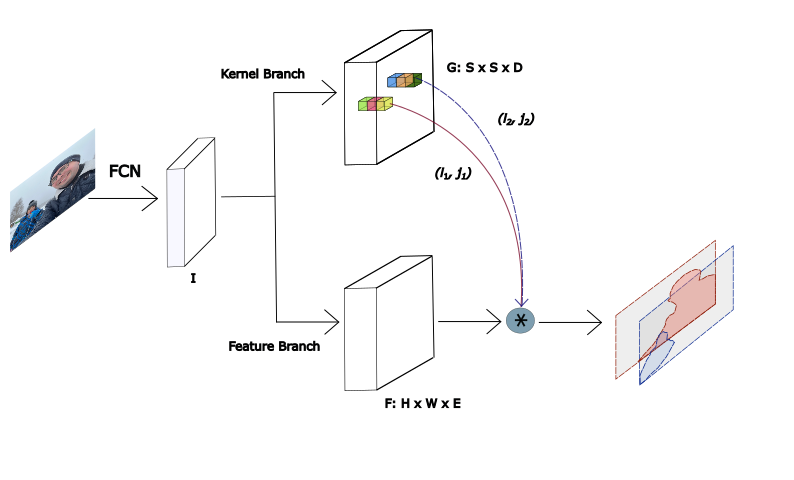
Image by Author | Canva
Python is widely known for its popularity among engineers and data scientists, but it’s also a favorite choice for web developers. In fact, many developers prefer Python over JavaScript for building web applications because of its simple syntax, readability, and the vast ecosystem of powerful frameworks and tools available.
Whether you are a beginner or an experienced developer, Python offers frameworks that cater to every need, from lightweight micro-frameworks that require just a few lines of code, to robust full-stack solutions packed with built-in features. Some frameworks are designed for rapid prototyping, while others focus on security, scalability, or lightning-fast performance.
In this article, we will review seven of the most popular Python web frameworks. You will discover which ones are best suited for building anything from simple websites to complex, high-traffic web applications. No matter your experience level, there is a Python framework that can help you bring your web project to life efficiently and effectively.
Python Web Development Frameworks
1. Django: The Full-Stack Powerhouse for Scalable Web Apps
Django is a robust, open-source Python framework designed for rapid development of secure and scalable web applications. With its built-in ORM, admin interface, authentication, and a vast ecosystem of reusable components, Django is ideal for building everything from simple websites to complex enterprise solutions.
Learn more: https://www.djangoproject.com/
2. Flask: The Lightweight and Flexible Microframework
Flask is a minimalist Python web framework that gives you the essentials to get started, while letting you add only what you need. It’s perfect for small to medium-sized applications, APIs, and rapid prototyping. Flask’s simplicity, flexibility, and extensive documentation make it a top choice for developers who want full control over their project’s architecture.
Learn more: https://flask.palletsprojects.com/
3. FastAPI: Modern, High-Performance APIs with Ease
FastAPI is best known for building high-performance APIs, but with Jinja templates (v2), you can also create fully-featured websites that combine both backend and frontend functionality within the same framework. Built on top of Starlette and Pydantic, FastAPI offers asynchronous support, automatic interactive documentation, and exceptional speed, making it one of the fastest Python web frameworks available.
Learn more: https://fastapi.tiangolo.com/
4. Gradio: Effortless Web Interfaces for Machine Learning
Gradio is an open-source Python framework that allows you to rapidly build and share web-based interfaces for machine learning models. It is highly popular among the machine learning community, as you can build, test, and deploy your ML web demos on Hugging Face for free in just minutes. You don’t need front-end or back-end experience; just basic Python knowledge is enough to create high-performance web demos and APIs.
Learn more: https://www.gradio.app/
5. Streamlit: Instantly Build Data Web Apps
Streamlit is designed for data scientists and engineers who want to create beautiful, interactive web apps directly from Python scripts. With its intuitive API, you can build dashboards, data visualizations, and ML model demos in minutes.No need for HTML, CSS, or JavaScript. Streamlit is perfect for rapid prototyping and sharing insights with stakeholders.
Learn more: https://streamlit.io/
6. Tornado: Scalable, Non-Blocking Web Server and Framework
Tornado is a powerful Python web framework and asynchronous networking library, designed for building scalable and high-performance web applications. Unlike traditional frameworks, Tornado uses a non-blocking network I/O, which makes it ideal for handling thousands of simultaneous connections, perfect for real-time web services like chat applications, live updates, and long polling.
Learn more: https://www.tornadoweb.org/en/stable/guide.html
7. Reflex: Pure Python Web Apps, Simplified
Reflex (formerly Pynecone) lets you build full-stack web applications using only Python, no JavaScript required. It compiles your Python code into modern web apps, handling both the frontend and backend seamlessly. Reflex is perfect for Python developers who want to create interactive, production-ready web apps without switching languages.
Learn more: https://reflex.dev/
Conclusion
FastAPI is my go-to framework for creating REST API endpoints for machine learning applications, thanks to its speed, simplicity, and production-ready features.
For sharing machine learning demos with non-technical stakeholders, Gradio is incredibly useful, allowing you to build interactive web interfaces with minimal effort.
Django stands out as a robust, full-featured framework that lets you build any web-related application with complete control and scalability.
If you need something lightweight and quick to set up, Flask is an excellent choice for simple web apps and prototype.
Streamlit shines when it comes to building interactive user interfaces for data apps in just minutes, making it perfect for rapid prototyping and visualization.
For real-time web applications that require handling thousands of simultaneous connections, Tornado is a strong option due to its non-blocking, asynchronous architecture.
Finally, Reflex is a modern framework designed for building production-ready applications that are both simple to develop and easy to deploy.
Abid Ali Awan (@1abidaliawan) is a certified data scientist professional who loves building machine learning models. Currently, he is focusing on content creation and writing technical blogs on machine learning and data science technologies. Abid holds a Master’s degree in technology management and a bachelor’s degree in telecommunication engineering. His vision is to build an AI product using a graph neural network for students struggling with mental illness.

